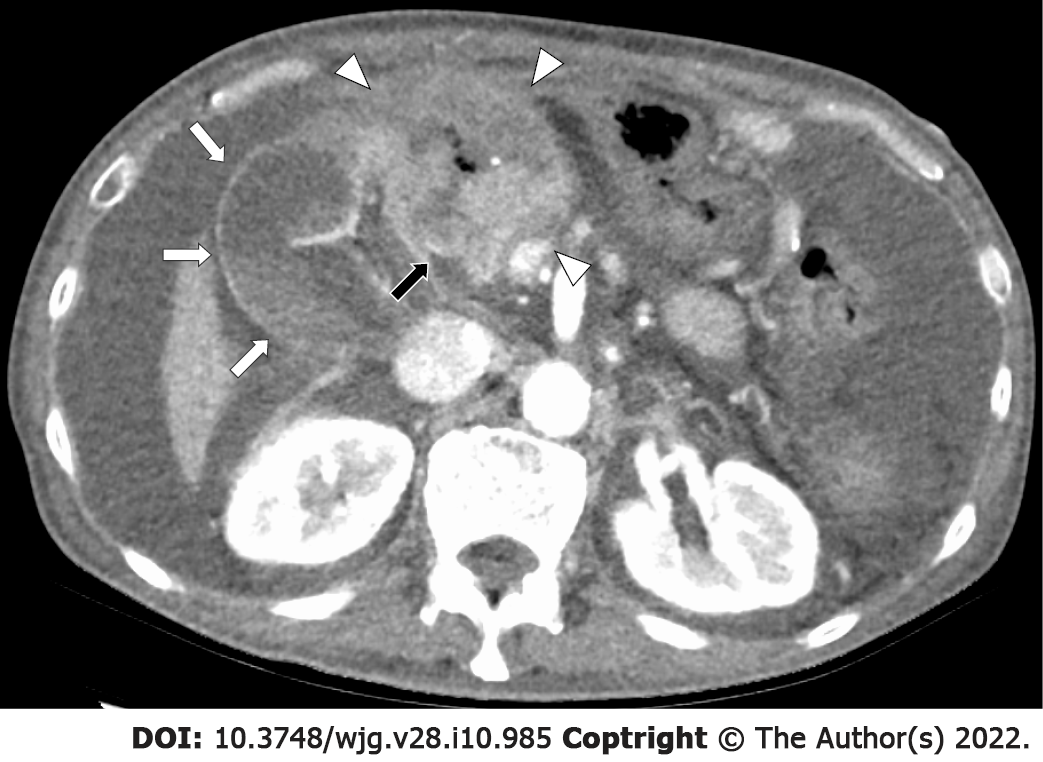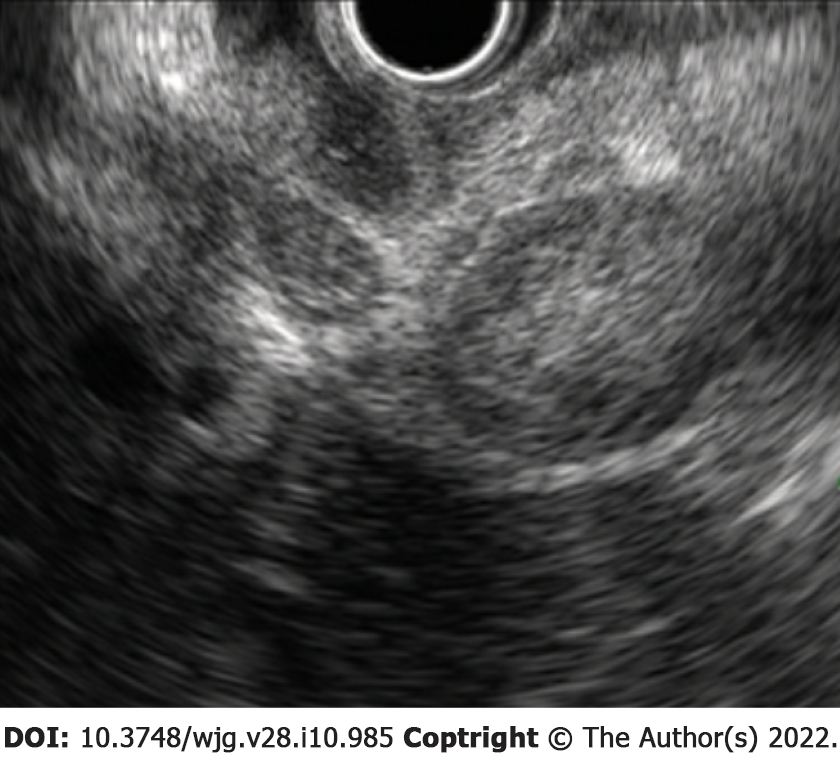Copyright
©The Author(s) 2022.
World J Gastroenterol. Mar 14, 2022; 28(10): 985-1008
Published online Mar 14, 2022. doi: 10.3748/wjg.v28.i10.985
Published online Mar 14, 2022. doi: 10.3748/wjg.v28.i10.985
Figure 1 A 69-year-old man presented with obstructive jaundice due to recurrence 18 mo after distal gastrectomy and Roux-en-Y reconstruction for gastric cancer.
A recurrent mass with central necrosis (white arrowheads) obstructed the extrahepatic bile duct (black arrow), causing dilatation of intrahepatic bile ducts and gallbladder (white arrows). While endoscopic ultrasound-guided hepaticogastrostomy led to symptomatic relief, the patient died 1 mo later.
Figure 2 A 62-year-old woman presented with jaundice, nausea, and vomiting 13 years after partial mastectomy for breast cancer.
Biopsy-proven duodenal metastases caused both bile duct (black arrow) and duodenal (white arrow) obstruction. Double stenting led to temporary symptomatic relief. The patient subsequently opted for palliative care.
Figure 3 A 69-year-old woman presented with abdominal pain and jaundice 12 mo after surgery for high-grade serous ovarian cancer.
Endoscopic ultrasound from the duodenal bulb revealed numerous metastatic lymph nodes obstructing the bile duct by extrinsic compression. Endoscopic biliary drainage was performed, but the patient died 1 mo later.
- Citation: Okamoto T. Malignant biliary obstruction due to metastatic non-hepato-pancreato-biliary cancer. World J Gastroenterol 2022; 28(10): 985-1008
- URL: https://www.wjgnet.com/1007-9327/full/v28/i10/985.htm
- DOI: https://dx.doi.org/10.3748/wjg.v28.i10.985











